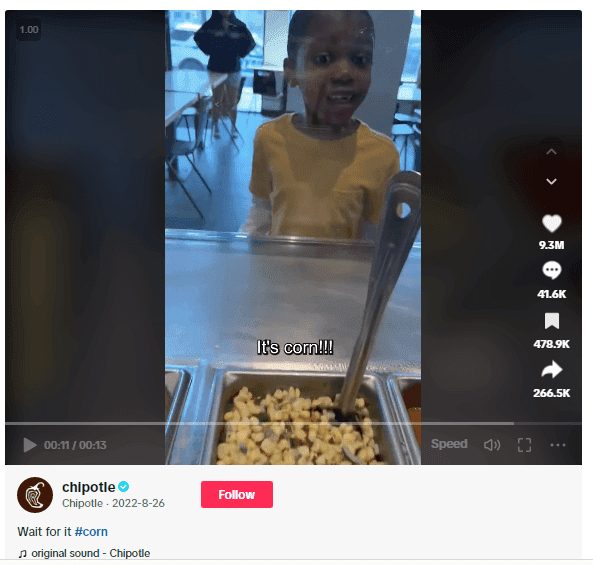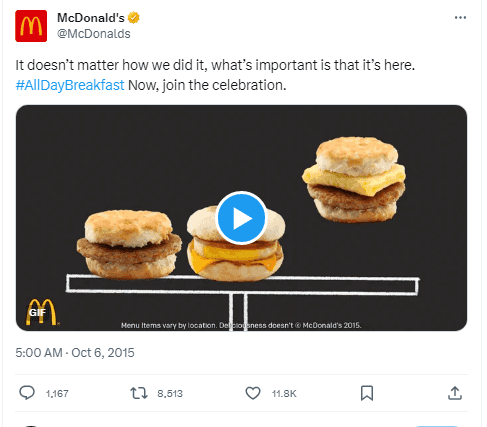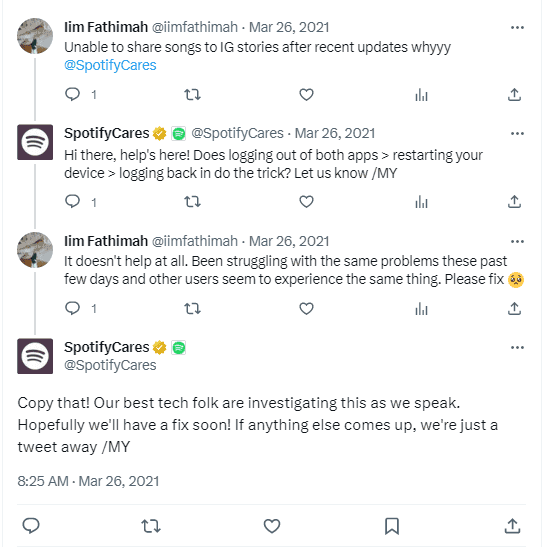Today, it’s almost impossible to see businesses run without a social media presence.
These businesses may have better brand awareness and loyalty, reduce customer acquisition costs, and more. But social media marketing isn’t all sunshine and rainbows.
In this article, we’ll explore the pros and cons of social media marketing so you can minimize its drawbacks and maximize its benefits.
Overview Of Social Media Marketing
Social media marketing uses social media platforms to promote a brand and its products. But, savvy marketers go beyond product promotion; they use social media to interact with their audience and build a community around their brand. In the 2023 HubSpot Social Media Trends Report, 90% of marketers say building an active online community is crucial to a successful social media strategy.
Popular social media platforms that you can leverage for community growth are:
- Facebook: 2.958 billion users
- YouTube: 2,514 billion
- Instagram: 2 billion
- TikTok: 1.051 billion
- LinkedIn: 922.3 million users
- Twitter: 566 million users
- Snapchat: 635 million users
- Pinterest: 445 million users
The widespread acceptance of these platforms by 4.59 billion global users causes some to use them as search engines. In the previously mentioned HubSpot report, 24% of consumers (aged 18-54) use social media first (not Google) to search for brands. This means an increasing percentage of consumers expect you to have an active social media presence.
Translation: brands must take social media marketing seriously to compete favorably in today’s markets.
Recommended Reading: 50 Social Media Best Practices Every Business Should Follow
What Are The Advantages & Disadvantages Of Social Media Marketing?
Below, we will highlight the advantages and disadvantages of social media marketing. We will also suggest solutions to the challenges so you can mitigate them.
Top 10 Pros Of Social Media Marketing
Broad & Targeted Reach
Social media companies have lots of user data that lets you precisely target your audience. For instance, with Instagram ads, you can target an audience based on demographics, location, interests, or other qualities.
Cost Effective
While traditional ad channels require large budgets, social media platforms offer ad options for businesses with small budgets. For example, the average cost per click for a Facebook ad is only around $0.44 per click. The precise audience targeting also makes social media deliver a higher ROI on ad spend.
Increased Brand Awareness & Visibility
The cost-effectiveness and many users make social media ideal for boosting brand awareness and reaching new customers.
Strategically choose the best social media platforms for your business, and create a detailed social media strategy.
Recommended Reading: Boost Your Brand With These Influencer Outreach Steps
Immediate Feedback & Interaction
Social media lets you run polls and surveys to hear your audience’s opinion on vital topics. To get granular, you can dive into your social media analytics to uncover what is or isn’t working and refine your strategy to maximize your ad spend.
Brand Loyalty
Social media is a powerful tool for fostering brand connection. One simple way of doing this is by responding to comments and engaging with your followers. According to a Sprout Social survey, this connection builds brand loyalty. 76% of the survey respondents say they will choose a brand they feel connected with over its competitors.
Opportunity To Go Viral
Jumping on viral trends can give businesses an enormous social media reach. For instance, the fast-food chain Chipotle went viral on TikTok when it jumped on the #corn trend. This trend was about a boy who raved about his love of corn in an interview. After the interview went viral, Chipotle recruited “Corn Boy” to make a video for its TikTok. As of this writing, the video has 9.3 million likes, 266.5k shares, and 41.6k comments!
Shareable Content
Creating shareable content can boost your brand awareness and build trust. Think of it like word-of-mouth marketing — when someone shares your content, their audience considers it an endorsement, enhancing your brand trust and credibility.
Access To Customer Insights
Customers discuss brands, products, and services on social media (including yours). Analyzing these conversations lets you understand your customers’ experiences, monitor sentiments, discover new product ideas, and gather other valuable insights. McDonalds is an excellent example of this.
The fast-food chain found 334,000 tweets mentioning “all-day breakfast” using social listening. These tweets were proof that customers wanted its breakfast menu served all day. McDonalds responded by launching an all-day breakfast in October 2015. The launch resulted in a 5.7% jump in sales in Q4 of 2015, proving the impact of the Tweets.
Fun & Creative
Everyone loves a laugh. But if yours is a B2B company, injecting humor into your marketing can be difficult. Social media lets you infuse humor and personality into your marketing while maintaining professionalism.
Fast Results
The timeline for seeing results from social media marketing depends on factors like your budget, goals, commitment, and social media expertise. While organic social content will help you create brand awareness, ads will quickly get customers in the door.
Cons Of Social Media Marketing
Can Be Time Intensive
Successful social media marketing requires creating and publishing high-quality content, engaging with followers, and tracking analytics. These tasks can be challenging, especially for businesses with small marketing budgets.
Strategies For Effective Time Management
- Content planning and creation: You save time when you plan and batch-create your content.
- Use social media management tools: Tools like CoSchedule’s Social Calendar let you plan your content, schedule posts, and engage with followers on your social media accounts from one dashboard.
- Prioritize the highest impact platforms: Resist the urge to be active on all social media platforms. Instead, focus on one or a few platforms that are likely to drive the highest results.
Dependent On Changing Algorithms
Your content’s reach is at the mercy of unpredictable and ever-changing algorithms of social media platforms. This unpredictability can sometimes be frustrating.
How To Adapt To Changing Algorithms
- Stay informed: Follow social media industry publications and blogs to keep abreast of algorithm changes.
- Create quality content: Engaging, high-quality content will likely perform well regardless of algorithm changes.
- Customize your content for each platform: Don’t create one piece of content and publish it as-is across several platforms. What works for LinkedIn may not work for Twitter. Tailor your content to fit the different social media platforms.
The Increasing Competition For Attention
Thanks to social media marketing’s low-entry barrier, users get inundated with several marketing messages. This competition will likely increase, especially given the growing popularity of AI content creation tools.
How To Gain Attention Amidst The Competition
- Develop a reputation for sharing outstanding content only. Valuable and engaging will always rise above the noise. If you’re consistent in your delivery, users will notice and stop scrolling to read your content when it appears in their feed.
Potential For Decreased Organic Reach
Organic reach for social media content has declined for about a decade, making it difficult to reach a large audience without paid advertising.
Tips For Boosting Organic Reach
- Encourage engagement and shares: Followers are likelier to engage with your content when you ask them to. You can also incentivize them to share content by running social media contests or giveaways.
- Create shareable content. Two things happen when you create shareable content. First, each share extends your reach to the sharer’s network. Second, shares signal to the algorithm that content is high-quality, causing it to increase your content’s visibility and reach.
Creates Space For Negative Feedback
Consumers use social media to voice their frustrations and hold brands accountable. If mishandled, minor customer service issues can trigger widespread criticism and hurt a brand’s reputation.
Tips For Dealing With Negative Feedback
- Address customer complaints promptly: Prompt resolution of customer complaints boosts your brand’s reputation. It helps if you provide a public resolution to the complaint. However, know when to take conversations private.
- Apologize for mistakes made: Even if complaints aren’t resolved instantly, apologizing and communicating your willingness to fix the problem goes a long way.
Difficulty Measuring ROI
Proving to yourself or higher-ups that your marketing efforts contribute to the bottom line is a must. According to Sprout Social, proving ROI is social media teams’ second biggest problem.
How To Use Data To Track Your Results
- Use Google Analytics. Google Analytics can help you prove social ROI by tracking how social media traffic converts into leads and sales.





